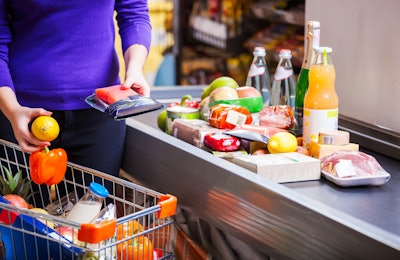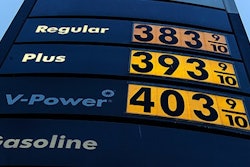
Imagine if every marketer knew the value of a potential customer immediately upon arrival. While this sounds like an unattainable superpower, customer intelligence platforms and customer segmentation make this dream a reality.
Grocery retail is not formulaic. All marketing decisions are based on an ever-changing repertoire of customer behaviors and extenuating factors like inflation and supply chain disruptions. But what if grocers established a standard system for determining customer segments and then matched these segments with the strategies that would most impress and engage them?
In fact, this statement may surprise you, but when it comes to marketing, grocers should take a cue from bankers.
A bank’s FICO scores provide insight into the reliability of a potential bank customer, and these standardized scores let a financial advisor know what policies they should and should not offer.
FICO scores should serve as inspiration for grocery marketers. With a similar system, retailers can analyze the purchasing behavior of their customers and assess the value they bring to the business. As well, scores can help inspire effective marketing messages and promotional strategies.
Scoring grocery shoppers by tiers
Now, imagine that grocers assigned scores to their customers, let’s call them “Customer Scores.” Scores would be based on things like price sensitivity, spend behavior, basket size, breadth of categories shopped and frequency of purchases. These scores could be used across the retail organization to evaluate all customer-facing activities, from marketing initiatives to operations to product assortment decisions.
In this scenario, shoppers with high Customer Scores would be the best customers; the ones that visit frequently and fill their baskets. For the customers in this category, retailers can focus on retention using loyalty programs. Customers with lower scores will need more personalized promotions, stronger messaging and an intriguing in-store experience to become more frequent shoppers.
Let’s take a closer look at how this system would work, by grouping customers into three tiers based on their Customer Scores.
Tier 1 – Rewarding top scoring customers
Much like bank customers with high FICO scores, shoppers at the top of a grocer’s customer tier are the most loyal and most frequently returning shoppers. These customers don’t need introductory messaging or promotions for items they already purchase often. Grocery marketers should offer personalized loyalty programs to retain these customers and encourage them to devote more customer loyalty, visit more frequently or increase their basket sizes.
According to a recent survey from Treasure Data, 82% of consumers are motivated to buy from brands or retailers that offer loyalty programs. For returning customers who have already exhibited some level of loyalty, a rewards program can encourage them to buy more and visit more frequently. For these shoppers, the loyalty program must be built around their existing customer journey. For instance, if the shopper is already using omnichannel methods like curbside pickup, try digitizing the rewards program on an app.
Furthermore, with loyalty programs, grocers will attain more data on this top customer segment. This data can be used to populate the loyalty program rewards, recommendations and promotions with relevant and effective offers – immediately increasing the success of the loyalty program.
Finally, with some level of consistency in the purchasing behavior of this group, their actions should be considered across the entire organization – beyond marketing. For instance, changes to product assortment or pricing can be evaluated by the impact on the baskets and sales from the top shoppers.
Tier 2 – Fostering relationships with average scorers
Similar to the first tier of shoppers, customers in the second customer segment are familiar with the grocer. But unlike the top customers, their loyalty is harder to come by. Those with mid-level Customer Scores may need a bit more attention before they stop comparing prices or visiting the competition’s nearby store.
With this in mind, grocers will want to offer personalized product suggestions to fill out these shoppers’ carts. Product suggestions for this group can also utilize existing customer data from past purchases.
Recommendations can be delivered over email, SMS or apps and they can work in a few ways. For example, the grocer can recommend:
· Related items that might complement an item the shopper has already purchased, like recommending jelly after a peanut butter purchase;
· Products that would fit together in a recipe the shopper has already shown interest in;
· Substitute products in case one of the shopper’s commonly purchased items is out-of-stock;
· Or items related to the shopper’s diet like a keto or dairy-free item depending on the shopper’s past preferences.
By offering relevant recommendations, grocers can expedite a mid-tier shopper’s journey. With a smooth in-store experience and effective messaging, second-tier customers will dedicate more loyalty to grocers and improve their basket sizes.
Tier 3 – Winning newer shoppers who have the lowest scores
Even the most well-established store in a community should be trying to welcome in new shoppers and create lasting relationships. Shoppers with low scores should not be disregarded, rather they should be the group receiving the most attention. These customers will need more targeted promotions, stronger messaging and an intriguing in-store experience in order to be motivated to become more frequent shoppers.
Especially in times of inflation, customers are drawn to deep discounts. However, discounts can be wasteful for grocers, and they can threaten already tight margins. That’s why all promotions must be well-targeted and relevant for each shopper. For example, if a shopper has come in five times and always gone to the bakery, grocery marketers can leverage this insight. Perhaps this shopper would visit more frequently if they were sent promotion codes for bakery items via email or if the grocer recommended exciting ways to include the bakery items in a recipe.
An engaging and personalizing in-store experience will attract even the lowest tier of shoppers if customer insights are leveraged effectively.
Understanding the value of every shopper
As grocery retailers continue to fight for market share and sales despite ongoing complications like inflation and growing digital competition, retailers should be inspired by the banking industry. With appropriately segmented customer profiles, grocers can create an exceptional experience that’s designed for each group, increasing profits and building stronger relationships.




















